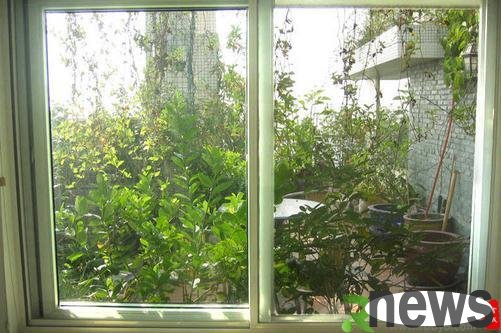Skills for purchasing sound insulation windows - Cleaning and maintenance of sound insulation windows Skills for purchasing sound insulation windows 1. Consider the sound insulation volume of windows Understand the sound insulation volume of doors a...

Skills for purchasing sound insulation windows - Cleaning and maintenance of sound insulation windows
Skills for purchasing sound insulation windows
1. Consider the sound insulation volume of windows
Understand the sound insulation volume of doors and windows. According to your own economic conditions and actual needs, the higher the sound insulation volume, the higher the price of sound insulation windows, but the sound insulation volume should not be less than 30dB. If the environment you are in is seriously polluted or requires high indoor environment, you should also pay attention to the low-frequency sound insulation volume of doors and windows and the lowest sound insulation frequency. Because traffic noise energy is concentrated in low frequencies, the low-frequency sound insulation performance of doors and windows is its weakest link, which will inevitably cause low-frequency sound leakage, which will eventually affect the sound insulation effect.
2. Consider the glass material of the window
Glass materials are divided into ordinary glass, hollow glass, composite hollow glass and vacuum glass. Among these glasses, vacuum glass has the best sound insulation effect, because vacuum glass separates two pieces of glass and evacuate the air in the middle, forming a vacuum layer between the glass. The principle that sound cannot propagate in the vacuum to sound insulation, so no matter which noise is, it cannot be transmitted into the house through the glass; hollow glass can only isolate high-frequency or low-energy noise, and the sound insulation effect is not very good for low-frequency or high-energy noise; the sound insulation effect of composite hollow glass is average, but it is very safe and is not easy to break.
3. Consider the type of windows
The types of windows include casement, push-pull and fixed windows. In terms of sound insulation, fixed windows have the best sound insulation effect, but this kind of window is only suitable for places where there is no need to open but also lighting needs; compared with casement and push-pull windows, the sound insulation effect of casement windows is better than that of sliding windows, and you can choose the appropriate window type according to your needs.
4. Regular manufacturers purchase
Some owners try to save money to buy soundproof windows in some small stores, but if they find that the quality of the windows is problematic, most owners will not find the merchant’s compensation. If the owner buys in a regular home store, even if the store buying things cannot be found, the store will solve the problem for the owners, which will make it easier to protect their rights. Be careful not to save a few dollars and make endless troubles.
5. Considering the quality of the sealant strip of the window, the sealant strip should directly affect the sound insulation of the sound insulation of the sound insulation window. The sealant strip should be soft and elastic anti-aging materials. However, the sealant strip function is sealing. It is impossible to increase the sound insulation of the window without leaking sound in the window by relying on the adhesive strip to increase the sound insulation of the window. In order to prevent sound insulation window from leaking due to gaps in sound insulation windows, the sealing strips of the window should be closed, and there should be no gaps at the four corners. If there is a gap, it will also cause noise leakage.
Cleaning and maintenance of sound insulation windows
1. Are there any cracks in the welding of frame profiles of sound insulation windows?
2. Check the junction of soundproof window frames frequently. If the aluminum doors and windows are loose over time, it is likely to deform the overall frame, making the doors and windows unable to close and seal.
3. Pay attention to check whether the seal strips and leather strips of the sound insulation window shrink, deform or have gaps.
4. Check whether there is dust or sand on the sound insulation window tracks and use a soft brush to clean the dust.
5. The sound insulation window can be dipped in a soft cloth with clean water or neutral detergent, but do not use ordinary soap and washing powder, and do not use strong acid and alkaline detergents such as stain removal powder, as this will easily corrode the surface of the profile.
6. When using the sound insulation window, the movement should be light and push and pull naturally; if you find any difficulties, do not push and push hard, and troubleshoot first. Accumulation and deformation are the main reasons for the difficulty in pushing and pulling soundproof windows. The door frame must be kept clean, especially the push and pull grooves.